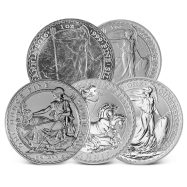



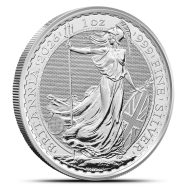

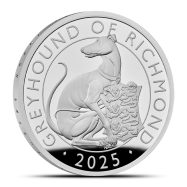
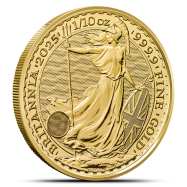
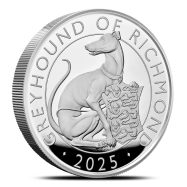

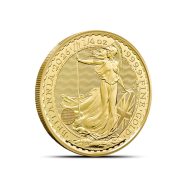

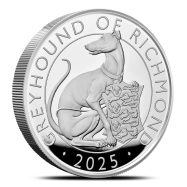


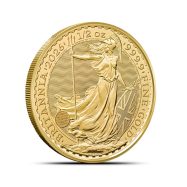

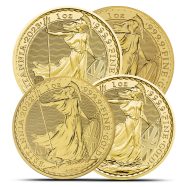


Coins have been minted on the British Isles for millennia, even before the Romans came in 43 AD. Celtic clans and petty kingdoms stamped their own coins. Later the Romans built mints across their conquered British territories. Today, all circulated coinage in Britain comes from The Royal Mint, which has an equally impressive history.
Officially, The Royal Mint’s birth began in 886 AD, when Alfred the Great united England, taking London back from the Danelaw (also known as the Vikings). In 1279, all coinage production was moved to the Tower of London, where it stayed until recent times. With the continuous improvements in pressing techniques and their increased size, the Tower eventually ran low on space, forcing a move across the street to Tower Hill in 1812. Then, in 1968, the Mint outgrew this location too and moved to Llantrisant, Wales. At the new Wales location, The Royal Mint began converting coinage from the old 240-pennies-per-pound-sterling model to the decimal-based system the UK has today.
This long and storied history tracks right alongside the nation itself. Royal Mint history includes well-known figures like Sir Isaac Newton directing operations as Warden of the Mint in 1696, who put an end to rampant coin clipping and counterfeiting by adding features such as reeding.
To this day, many historical British coins remain favorites in collections around the world. But circulated coins aren’t the only thing The Royal Mint is known for.
 One of today’s most notable coins coming from The Royal Mint is the gold sovereign. The gold sovereign is a 1 oz coin that has a face value of £1. Its own history dates back centuries to King Henry VII’s reign. Used as currency for its first several centuries, the modern gold sovereign is now a well-known bullion coin worldwide.
One of today’s most notable coins coming from The Royal Mint is the gold sovereign. The gold sovereign is a 1 oz coin that has a face value of £1. Its own history dates back centuries to King Henry VII’s reign. Used as currency for its first several centuries, the modern gold sovereign is now a well-known bullion coin worldwide.
During the First World War, The Royal Mint continued to stamp out sovereigns. But many of these were held in reserves rather than for circulation. With the end of the gold standard in the 20th Century, the move to bullion sovereigns was the first of the mint’s several successful ventures into collectible coins.
In 1987, The Royal Mint released the first Britannia in homage to the image used on Roman coins minted in England way back in Emperor Hadrian’s day, 119 AD. The reverse side’s female representation of Britain holding a trident and shield is as iconic an image as Lady Liberty is for U.S. coins.
The success of these bullion coins has made The Royal Mint one of the most revered mints in the world.
Along with its incomparable history, the mint is also one of the busiest bullion coin producers in the world. It churns out 5 billion coins (total) every year, including ever-changing circulation coinage with the highest degree of security features.
Recent security upgrades featured on its 2021 Britannia line of bullion coins include:
These modern features were rolled out for nearly the whole suite of bullion products stamped at The Royal Mint in the last few decades. And their number of impressive and superior-quality pieces only continues to grow.
Take the Britannia’s launch in 1987. In just its first ten years of modern production, its success led to creating a silver version in 1997 and eventually a platinum version in 2018. Today, these coins are valuable additions to any collection.
In addition to different metals, the mint has also produced stunning limited editions of these coins in various sizes and anniversaries. These include the 5 oz silver Britannia and the 200th-anniversary edition of the gold sovereign.
The Royal Mint’s leaders are well aware of how important it is to coin and bullion history. In 2016, the mint opened a purpose-built site at its main operation in Wales. This Royal Mint Museum attracts visitors worldwide to share the wonderfully rich history from their pre-Roman coinage to modern masterpieces.